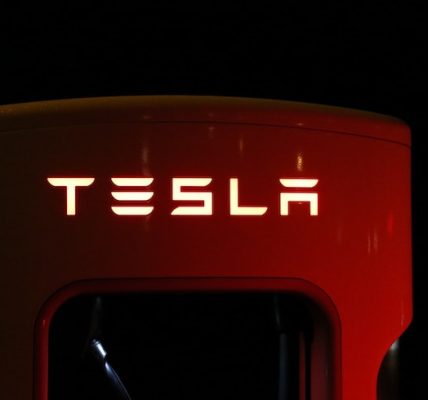Rethinking the US-China tech rivalry: Looking beyond mere measures, a metrics-based approach reveals how the US leverages innovation, inclusivity, and its dynamic ecosystem to navigate and excel in the complex landscape of technological competition.
Is China’s “stunning lead” in essential technologies real? A deeper look at the US-China tech competition reveals a complex landscape where metrics, not just measures, tell the real story.
The rivalry between the United States and China in the realm of technology is a narrative that’s been front and center for quite some time. A study earlier this year boldly proclaimed China’s “stunning lead” in essential technologies, adding another layer to a conversation that’s been ongoing for years. But is this narrative rooted in reality? A closer examination of the global impact and reach of American tech giants like Amazon, Apple, OpenAI, Boeing, Moderna, Microsoft, and Google suggests that the United States might not be trailing as much as it seems.
The Complexity of Competition Metrics
In the ever-evolving world of technology, the term “competition” takes on a different hue. Unlike traditional sports with clear scores and winners, the technology race is marked by intricacies that make measuring success far from straightforward. How does one keep score in this dynamic arena? Is it a matter of counting patents, tracking academic publications, gauging the influence of leading educational institutions, or simply tallying the number of multibillion-dollar companies? Or, perhaps, should we consider a more nuanced approach that takes into account a blend of these factors and more?
Indeed, the competition between the US and China spans a multitude of dimensions, from technological and economic to military and political. To get a true sense of the US’s standing in this rivalry, it’s imperative to shift the focus from mere numbers to meaningful metrics. This shift in perspective reveals stark contrasts between the dynamics of a free-market economy and a state-driven one.
From Measures to Metrics
Determining who’s ahead in a technology competition is alluringly tempting to peg on conventional markers of scientific progress, such as patents or scientific citations. These metrics are objective and quantifiable, after all. However, relying solely on these measures risks sidelining other critical variables that hold significant sway over the outcome of a US-China tech face-off.
The metrics that matter necessitate a more refined approach—one that encompasses sophisticated measurement, interpretation, and analysis. This entails capturing the nuances of quality, context, implementation, and impact. For the US, the path to victory isn’t solely paved with outpacing China on specific technological fronts. In fact, such a strategy could result in hollow triumphs that do little to advance national security interests.
The AI Landscape: More than Patents and Papers
Take the field of artificial intelligence (AI), for instance. China’s impressive arsenal of AI-related scientific articles and patents appears to solidify its global dominance in this realm. Yet, the US holds its ground in advanced AI developments through institutions like OpenAI, Microsoft, and Alphabet. These entities spearhead large language model creation and diffusion, contributing to a larger ecosystem that fuels the adoption of new technologies worldwide.
The vibrant US tech landscape, fostered by the tenets of an open society and the free flow of ideas, introduces metrics like commercial success, technology adoption, and real-world impact into the equation. Within the context of the strategic tussle with China, these metrics highlight the US’s knack for translating research into transformative, scalable innovations.
Metrics: Paving the Way for Strategic Success
Shifting the gaze from measures to metrics carries far-reaching implications, especially for institutions like the US Department of Defense (DoD). By adopting a metrics-based approach, the DoD can align the development of emerging technology with specific policy and military objectives. As it invests in technologies within its 14 Critical Technology Areas, the introduction of metrics can track progress toward addressing precise operational needs.
Moreover, this shift brings to light a more precise picture of the US-China tech rivalry, underscoring the strengths that set the US apart. Despite China’s towering population and rapidly expanding economy, the US can leverage its inherent advantages by focusing on metrics. A robust intellectual property protection framework, the potential for substantial innovation returns, and the synergistic links between government, universities, and industry contribute to a dynamic environment that fosters creativity, innovation, and entrepreneurship.
A US Perspective: Quality Over Quantity
What sets the US apart further is its commitment to inclusivity and the shattering of artificial barriers. This ethos creates a diverse workforce that acts as a wellspring of ingenuity and innovation. It’s this distinctly American approach that flips the script from a narrow measure-based competition, where quantity often overshadows quality, to a nuanced metrics-based perspective. This shift empowers the US to leverage its strengths, champion its core values, and lay a solid foundation for navigating and succeeding in the ongoing strategic showdown.
In the intricate dance of the US-China technology competition, metrics offer the key to unlocking a deeper understanding of who truly holds the edge. The allure of measures may provide a surface-level glimpse, but it’s the metrics that tell the full, intricate tale. As the technological arena continues to evolve, so must our methods of assessment. In embracing this shift, the United States positions itself to not only stay in the game but to thrive and champion innovation on a global stage.










